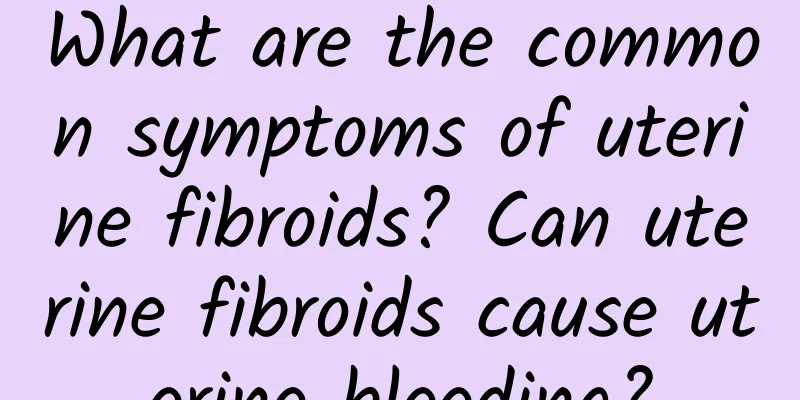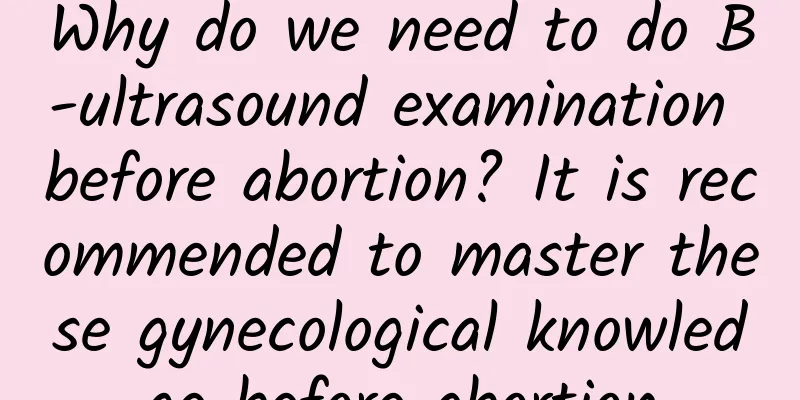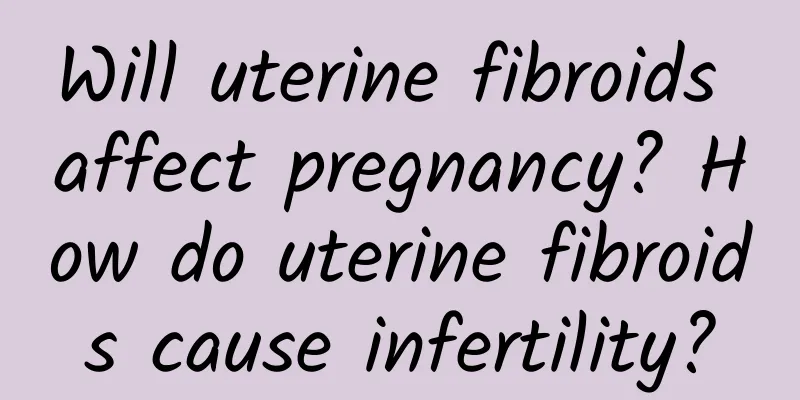Can endometrial thickening be cured?

|
Endometrial thickening must be treated as soon as possible after the disease occurs. There are many treatment methods. However, different conditions and different patients have different treatment methods. Let's first understand the treatment principles of endometrial thickening. Treatment principles The treatment of atypical endometrial thickening must first be diagnosed and the cause of the atypical thickening must be determined, including whether there is polycystic ovary, functional ovarian tumor or other endocrine dysfunction. Those with any of the above conditions should receive targeted treatment. At the same time, symptomatic treatment can be started for atypical endometrial thickening, using medication or surgery. The choice of these two treatment options should be based on age, type of endometrial thickening, and fertility requirements. (1) Different ages have different considerations: ① Young women who are eager to have children should avoid overdiagnosis and overtreatment. It is not uncommon for endometrial thickening to be overdiagnosed as adenocarcinoma and even overtreated. It would be a great mistake to remove the uterus without a confirmed diagnosis. In clinical practice, there are many examples of such mistakes. If the pathologist is not aware that the patient has a desire to have children and the clinician does not emphasize it, misdiagnosis and mistreatment may be inevitable. Therefore, for the diagnosis of endometrial biopsy in young infertile women, if there is any doubt, multiple experts should be consulted to clarify the differential diagnosis of endometrial thickening or endometrial adenocarcinoma to the greatest extent possible. ② Perimenopausal or postmenopausal women should be alert to the possibility of atypical endometrial thickening and concurrent cancer, and should consider hysterectomy. Be careful not to be overly conservative. Do not perform endometrial resection alone without excluding the possibility of cancer, which may cause adverse consequences. When the uterus is removed due to atypical endometrial thickening, the removed uterus should be examined on the operating table to see if there is concurrent cancer, and pay attention to whether there is cancer infiltration of the myometrium to select the appropriate surgical scope. (2) Different types of intimal thickening have different treatment principles: ① Simple and complex endometrial thickening: A. Young patients: Most of them suffer from anovulatory functional uterine bleeding. The basal body temperature should be measured. If it is confirmed to be monophasic anovulation, ovulation induction treatment can be used. B. Reproductive period: Generally, one curettage can control bleeding. If bleeding still occurs after curettage, hysteroscopy and B-ultrasound should be performed to exclude submucosal myoma or other organic lesions. Infertility may also occur during the reproductive period, and patients with polycystic ovary syndrome with clinical manifestations of anovulation should be treated as polycystic ovary syndrome. C. Menopausal transition period: It is often anovulatory functional uterine bleeding. If menstruation is infrequent and the amount of blood is heavy or the bleeding time is long after curettage and hemostasis, progesterone treatment should be given every two months, and follow-up observation should be conducted after 3 cycles in total. D. Late menopause: Ask whether to use estrogen replacement therapy alone. After curettage, replacement therapy can be suspended or progesterone can be added. ②Atypical endometrial thickening: A. Menopausal transition or postmenopause: hysterectomy. Since age is the main risk factor for endometrial thickening and malignant transformation, hysterectomy is appropriate for this age group of patients. B. Young or reproductive patients: drug treatment. Atypical thickening is a potentially malignant precancerous lesion. If not treated, 20% will develop into cancer. However, cancer is rare in young patients, and drug treatment is effective for young and reproductive patients. Therefore, drug treatment can be selected to preserve fertility. |
<<: Menopause physical therapy price
>>: What are the tests for endometrial thickening?
Recommend
Methods for treating vaginitis during pregnancy
If pregnant women do not treat vaginitis in time,...
What to do if cervical erosion itches
What to do if cervical erosion and itching occur?...
What causes vaginal itching?
Excessive vaginal discharge and vulvar itching ar...
What is the cause of female cervical erosion? 3 treatments for female cervical erosion
Women are fragile. If they don't take care of...
Detailed explanation of the three major precautions and conditioning methods after spontaneous abortion - attached is a list of dietary taboos
There are always regrets in life. Not every baby ...
Can people eat lychees after abortion?
You can generally eat lychees in moderation after...
What to do if a pregnant woman has pelvic effusion
Pelvic effusion is some inflammatory exudate in t...
How to prevent miscarriage? Pay attention to these 6 points
During pregnancy, being careful about sex, mainta...
What are the causes of uterine fibroids?
Although uterine fibroids are benign tumors, they...
Women should keep warm and clean after abortion
There are two care measures that women should pay...
What are the diagnostic indicators for hyperprolactinemia?
With the continuous deterioration of various envi...
Five common treatments for adnexitis
The high incidence of gynecological diseases has ...
What to do with dysmenorrhea? 9 Chinese medicine foods that are delicious and effective
Many women will experience dysmenorrhea in their ...
How to Differentially Diagnose Acute Pelvic Peritonitis
Female pelvic reproductive organ inflammation is ...
The key to powerful running is not in the legs! Why?
Do you often feel exhausted after running for a s...









